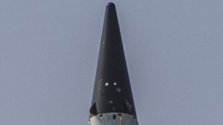It isn't about whether India underestimates that China has superior nuclear force and capabilities (they don't) but having another means to deter or counter a Chinese naval attack on India. This won't happen unless many unlikely things occur but the Indian thinking is to have something that would make China think twice about sending a massive naval force to attack India in India's front yard. Almost the same way back in the 1990s where China started developing the ASBM "assassin's mace" weapon against USN fleets. I would imagine that China pursued nuclear warheads delivered by "ASBM" first before refining the weapon over 20 years to have various conventional warheads replacing those nuclear ones.
India is basically starting to explore the ASBM but has yet to develop the entire sensor network (the equivalent types of satellites and HALE drones China has as part of ASBM network) and is only starting so they simply have an IRBM. It is minimally different and is not an ASBM but could feature a bit more of an attempt at improving its accuracy to a point where a KT yield warhead could do enough damage to a fleet sailing quickly.
The idea isn't about using nukes on ships because that escalates everything in an escalation chain where India would fare worse than a nuclear escalation between a 1970s China and USA. It is about beginning the journey on developing and refining an ASBM over time to a point where it is able to carry conventional warheads onto moving sea targets. As things stand only China has developed full ASBM with Iran being the only other that is further along on this development cycle than giants like Russia and the US. Reason those two have not is less about capability and more about requirement. Well for Russia, they have so many SSNs, supersonic AShM and now hypersonic AShM.
India has a long term goal with this development and it needs to start somewhere. However it is truly pointless since there is close to no situation where China would be sending fleets to attack India from the Indian Ocean. On that consideration it seems more like a me too vanity project which at the moment amounts to something basically identical to a pretty third rate Indian IRBM they simply want to call a "first step" of developing a "ASBM".
The key to ASBM is more in the guidance of the MaRV, the sensor networks, and their communication. At the moment India has no MaRV tech, no sensor tech of any close equivalence to the subsets of Yaogan, Shijian, Gaofen, Tianxin series of special purpose satellites with some capabilities met only by American ones and no others. India was struggling with a Rustom when China has been flying WZ-7s, WZ-8s, and Divine Eagle HALEs around for years. The communication and processing tech within platforms would require decades and many billions to develop for India and they have not started a single serious project in either of these two general domains.
So the effort here with ASBM may be presented as a "we intend to eventually..." sort of project but at the moment it seems more like a me too project with no real use since any war would be fought over the land borders. PLAN cannot afford to divert any significant fleet force to engage in some kinetic exchange with India even if a full blown war was to happen. This ASBM against Pakistan is overkill and inviting nuclear escalation if used when it hasn't been completed or a total waste of IRBMs if it has been completed since PN is really a rather unimpressive force even with some modernisation and relatively modern token equipments. IN honestly outgun PN by quite a margin that it can comfortably hold or defeat the PN without having to use higher value assets like ASBM.

